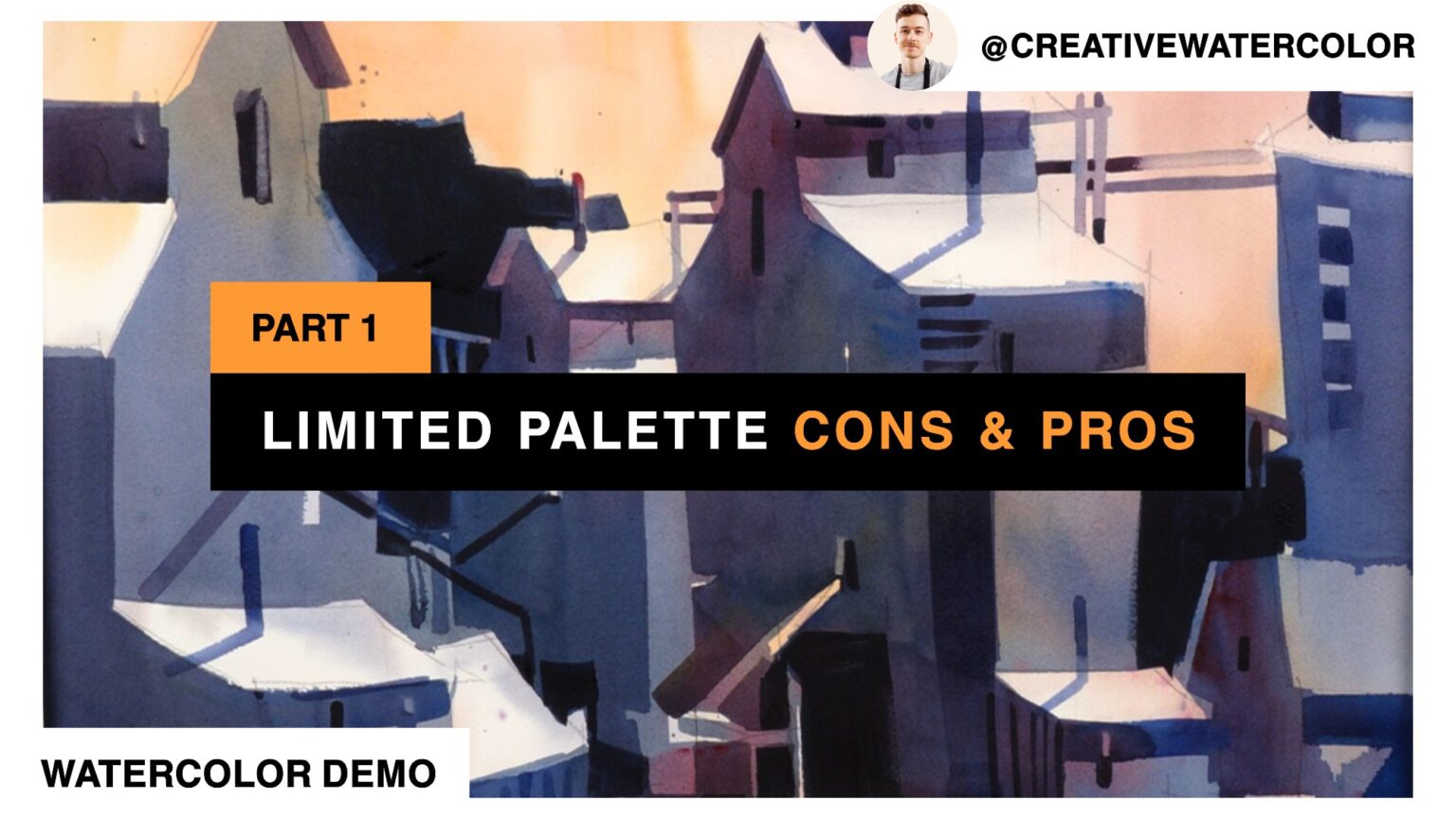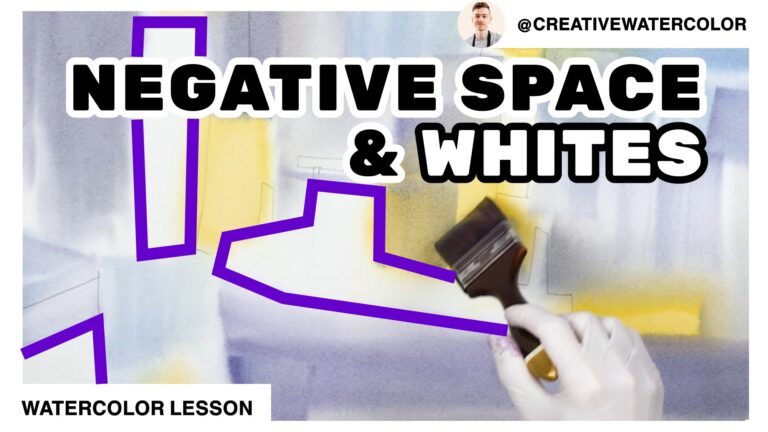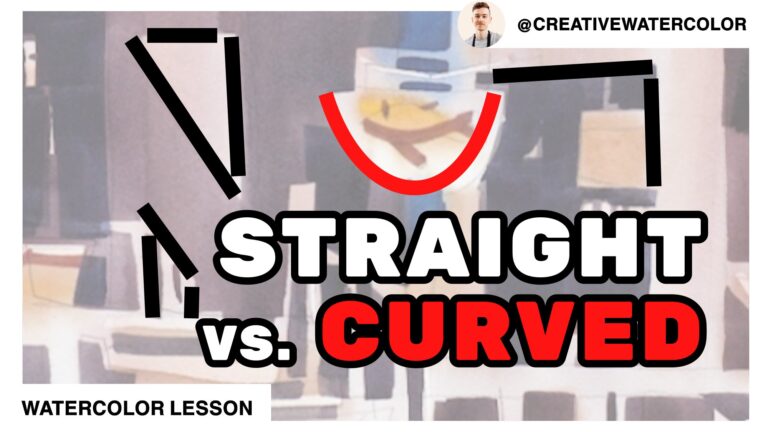The benefits and dangers of limited palette – if you ever read or heard that learning color through limiting your palette leads to almost instant results, check out this lesson where we discuss the cons and pros of this exercise.
The Benefits And Dangers Of Limited Palette - Material List
Paints
- Winsor & Newton Winsor Yellow
- Winsor & Newton Permanent Alizarin Crimson
- Winsor & Newton Winsor Blue Green Shade
Brushes
- Robert Simmons Skyflow Synthetic 2″
- ProArte Renaissance Sable 1″
- Winsor & Newton Series 995 Synthetic 1″
- Winsor & Newton One Stroke Sable 1/2″
- Rosemary & Co Pure Sable Series 90 #6
- Webb Liner #4
Paper
- Saunders Waterford 140lb Cold Press, 15″ x 22″
The Benefits And Dangers Of Limited Palette - Reference Images
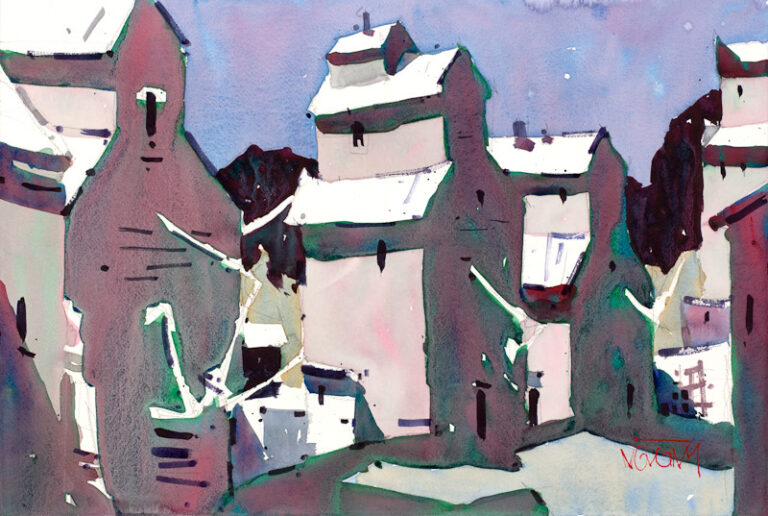
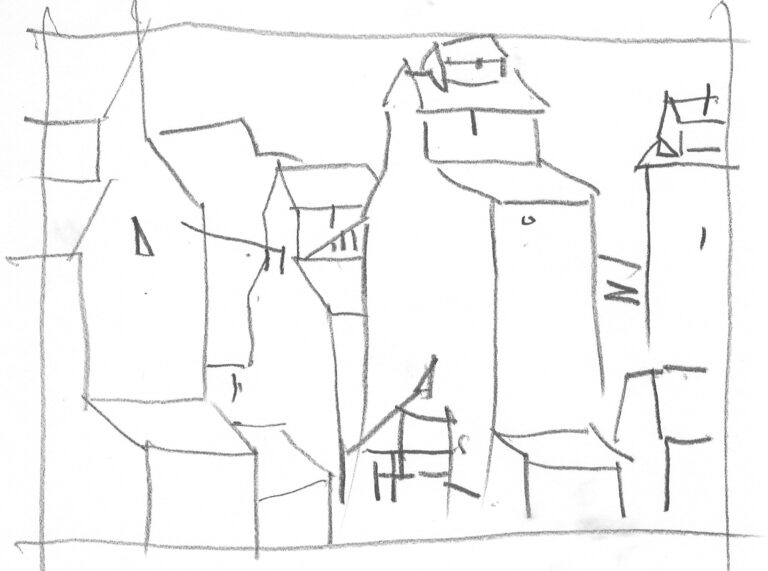

The Benefits And Dangers Of Limited Palette - The Lesson
Hello everyone and welcome back to my studio! We have before us another exciting week of painting and this time around we’re going to visit the Big Sky Country – Montana! Exactly 10 years ago I painted a watercolor based on the grain silos of Montana. I always wanted to return to the subject because the old silos have very interesting, angular shapes.
Using my original painting as a point of reference, I’ve redrawn the composition on a piece of sketching paper. I altered the composition somewhat – I changed the direction of the primary silo grouping so that it doesn’t lead the eye outside of the composition and as such is more contained. I also took care to eliminate the almost predictable repetitiveness of the original composition.
The one improvement to this new sketch would be the addition of vehicles and/or people to suggest activity and give a better sense of proportion and scale. Given the size of the silos I would only do this for a full sheet work.
Today we’re going to work with a limited palette and we’ll discuss the benefits and dangers of using only three colors. Using a limited primary palette seems to be one of the more prevalent recommendations when it comes to newcomers to watercolor. Which brings me to the benefits of using a limited palette:
- Certainly the most obvious benefit is gaining a basic understanding of color mixing. With three primary paints we can mix secondaries and tertiaries, expanding the usable spectrum of colors.
- By using a limited primary palette we train our eye to discern subtle color shifts.
- We improve our control when mixing washes because of the limited availability of hues our triad can produce.
- We don’t feel overwhelmed like we would facing a full 10-12 color palette.
The benefits of using a limited palette are undeniable. But what about the dangers? Using a limited palette poses certain risks, and this is true especially, but not exclusively, when it comes to inexperienced painters.
Very seldom the recommendation comes with the appropriate disclaimer or even the advice on correctly choosing the paints for the exercise. If the student selects a limited palette without understanding these problems, it may cause more problems than provide solutions. Let’s discuss a few major issues that stem from limiting your palette to only three primary colors and how to deal with them.
- Expecting the ability to mix every possible color found in nature. The assumption that any three primary paints could approximate the amount and intensity of colors found in nature is false, and frankly ridiculous. As artists we work inside a fairly limited color gamut. Its outside parameters are defined by a handful of the most intense pigments. As soon as any two are mixed a severe reduction of their individual intensity occurs.
- One of the biggest mistakes the inexperienced artist makes is choosing primary triad that doesn’t cover the entire value range. Every color has value. Choose a triad with which you can mix light, middle and dark values. Otherwise you won’t be able to build up your value structure and your painting, while colorful, may become unreadable. Value comes at the cost of intensity. Darker the value, the less intense the paint can be. A compromise is necessary. Ask yourself: am I after the most intense colors possible? Or do I create a more muted overall expression and introduce pure color in certain places, which by contrast makes them stand out? These are creative color strategies we employ when dealing with limitations such as using a limited palette.
- The desire to replicate color as it’s found in nature. This is not exclusively a problem of limited palette but it’s worth mentioning anyway. While there’s nothing wrong with representational use of color, we should always look at a painting in the context of overall temperature dominance. Next time you see a great painting ask yourself, is this painting predominantly warm, cool, or neutral? For maximum impact, use color in a way that leads to this dominance and offset it by introducing its opposite in small amounts. The artist manipulates the relationship of warm and cool colors in a painting, regardless of how many or few colors he has on the palette.
To conclude, utilizing a limited palette in your practice may be a good way to learn more about watercolor and the colors on your palette. There are benefits and there are downsides to working with limited palette.
I hope that this discussion helps you be better prepared to deal with the shortcomings of limited palette. May your next painting be a success. If you have any questions at all, please leave them in the comment section below and I’ll see you in the next video!

